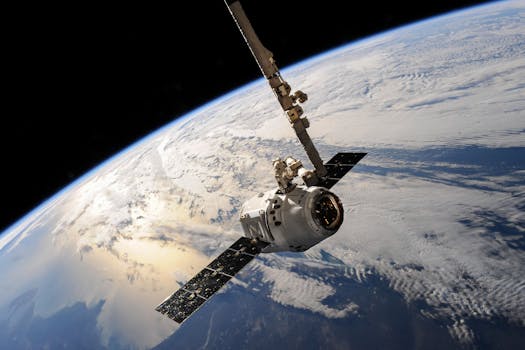MEO Satellites: Revolutionizing Global Communication with Medium Earth Orbit Technology – MEO satellites

MEO Satellites: Introduction to Medium Earth Orbit Technology – MEO satellites
MEO satellites, or Medium Earth Orbit satellites, are a type of satellite that operates in an orbit between 2,000 and 36,000 kilometers above the Earth’s surface. This orbit is higher than Low Earth Orbit (LEO) satellites but lower than Geostationary Orbit (GEO) satellites. MEO satellites are designed to provide a balance between the benefits of LEO and GEO satellites, offering faster and more reliable connections than GEO satellites while covering a wider area than LEO satellites.
MEO satellites have a number of advantages that make them ideal for a range of applications, including satellite communication, navigation, and Earth observation. One of the main benefits of MEO satellites is their ability to provide global coverage with a relatively small number of satellites. This is because MEO satellites have a higher elevation angle than LEO satellites, which means they can see more of the Earth’s surface and provide coverage to a wider area.
Applications of MEO Satellites
MEO satellites have a number of applications, including satellite communication, navigation, and Earth observation. In terms of satellite communication, MEO satellites are used to provide broadband internet access, mobile phone services, and other telecommunications services. They are particularly useful for providing connectivity to remote or underserved areas where traditional telecommunications infrastructure is limited or non-existent.
MEO satellites are also used for navigation purposes, providing location information and timing signals to GPS receivers on the ground. This is particularly useful for applications such as aviation, maritime, and land transportation, where accurate location information is critical.
In addition to these applications, MEO satellites are also used for Earth observation purposes, such as monitoring weather patterns, tracking climate change, and detecting natural disasters. They can provide high-resolution images of the Earth’s surface, which can be used for a range of applications, including agriculture, forestry, and urban planning.
Benefits of MEO Satellites
MEO satellites have a number of benefits that make them an attractive option for a range of applications. One of the main benefits is their ability to provide fast and reliable connections. MEO satellites have a lower latency than GEO satellites, which means they can provide faster and more responsive connections. This is particularly useful for applications such as video conferencing, online gaming, and cloud computing.
MEO satellites are also more resistant to interference than LEO satellites, which makes them a more reliable option for critical communications applications. Additionally, MEO satellites have a longer lifespan than LEO satellites, which means they can remain in orbit for up to 15 years or more, reducing the need for frequent replacement and minimizing the risk of service interruption.
Challenges and Future Developments
Despite the many benefits of MEO satellites, there are also a number of challenges and limitations to their use. One of the main challenges is the high cost of launching and operating MEO satellites, which can make them less competitive than other options, such as fiber optic cables or terrestrial wireless networks.
Another challenge is the limited availability of spectrum for MEO satellites, which can limit their ability to provide high-speed connections. However, researchers and engineers are working to develop new technologies and techniques to overcome these challenges and improve the performance of MEO satellites.
In terms of future developments, there are a number of exciting advancements on the horizon for MEO satellites. One of the most significant is the development of new satellite constellations, such as the O3b constellation, which will provide high-speed, low-latency connections to remote and underserved areas.
Additionally, there are a number of new technologies and innovations being developed to improve the performance and efficiency of MEO satellites, such as advanced propulsion systems, more efficient power generation and storage, and new materials and designs for satellite components.



